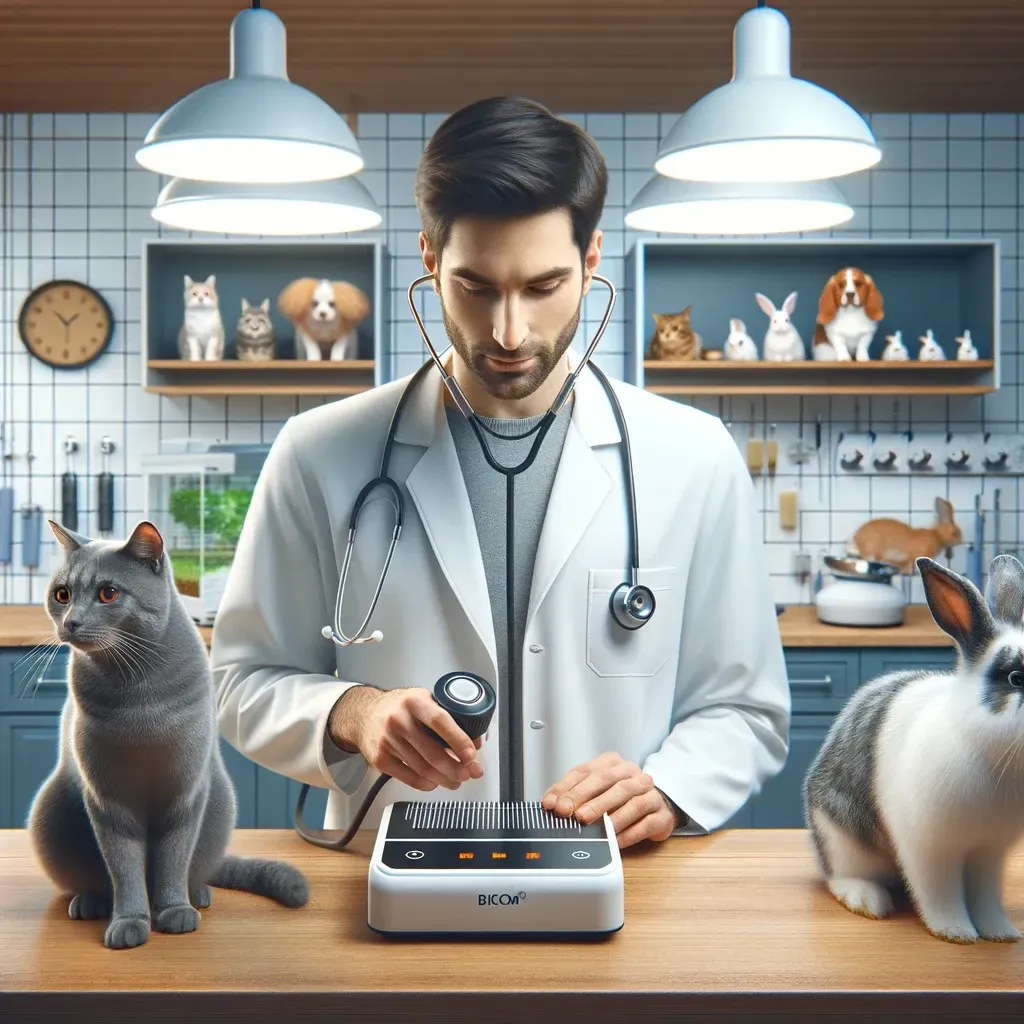
BICOM® bioresonance therapy: Offering help when all else has failed?
Custom HTML/CSS/JAVASCRIPT
patient Name: Dr. med. vet. Astrid Harte, Vet and non-medical practitioner
Initial skepticism overturned by convincing experience
When my daughter contracted neurodermatitis at the age of two, I followed the conventional treatment route since, as a conventionally trained vet, I wanted nothing to do with all the alternative “mumbo jumbo”.
That started a veritable odyssey from one GP to another, none of whom was able to offer my daughter any relief. Until a BICOM® therapist in Osnabrück was recommended to me. My daughter’s symptoms disappeared after just three treatment sessions and that’s still the case today! This made me revise my thinking and also opened up a new avenue for my veterinary practice.
I mainly treat allergies but I also use the BICOM® device for all other conditions. The main issues with horses are skin problems or chronic coughing.
Often all the options offered by conventional medicine have been exhausted and the animal’s owners are looking for a last resort.
Where in the past I would have had to prescribe antibiotics or cortisone, fortunately, I only need to do this in a very few cases these days.
One of my most recent cases was an eight-year-old mongrel that had been suffering day and night from severe permanent itching for the past five years. His paws were bleeding and scabby from scratching and gave off a foul-smelling discharge; the whole underside of his throat was bald with severe pyoderma. He had been treated with conventional medical methods for five years. My BICOM® testing revealed that this dog was infected with dermatophytes, mites, and Streptococcus. After three weeks bioresonance treatment the animal’s ears had healed, his itching had disappeared and his hair had started to grow again.
I was able to use BICOM® therapy right from the start and news of my success quickly spread. I am a committed practitioner of BICOM® therapy and an enthusiastic advocate of this form of treatment. Bioresonance therapy has considerably increased the catchment area of my practice.
There was a real deluge of patients when I first introduced BICOM® therapy into my veterinary practice and the first device soon paid for itself.
I am convinced that conventional medicine, by itself, often cannot achieve the desired outcome and that many human and animal patients are treated too quickly with drugs without really looking into the root cause. I’ve treated around 80% of my cases successfully purely with BICOM® therapy.
I am now using a second device in my practice and have trained as a non-medical practitioner since, having seen how quickly their animals were treated, the owners now want to be treated with the BICOM®.
Read this brochure to learn how bioresonance works in veterinary practice.
Search Testimonials
It is important to remember that individual anecdotes and testimonials should not be used as the sole basis for making decisions about medical treatments or therapies.
When it comes to alternative therapies like bioresonance, it is essential to rely on evidence-based research and the advice of trained medical professionals. While some people may have positive experiences with bioresonance for their animals, it is important to approach these claims with caution and seek out reliable information from reputable sources.
Ultimately, the decision to pursue bioresonance or any other alternative therapy for your animal should be made in consultation with a veterinarian or animal health professional who can help you weigh the potential benefits and risks.
Pollen – a nuisance for our animal companions too
Hay fever patients are only too familiar with the problem. Year after year the misery begins in the spring with stinging eyes, runny itchy nose and, in severe cases, with a cough and asthma as well. What is perhaps less well known is that our animals too suffer increasingly from this same medical condition.
Just as with humans, the incidence of allergies is also becoming more frequent in animals. Allergic reactions may be provoked by airborne allergens such as pollen, house dust and house dust mites, amongst other factors. Food intolerance is also on the increase, however, and represents a distressing problem for the affected animals.
Now, in spring, as it gets warmer, allergic animals are all suffering as well. With animals it is mainly their skin which itches or else their
noses run more and they occasionally sneeze. Changes in their coats and reddening of the skin are often noticed in the face, feet and ears. These areas often display bloody claw marks and develop into very painful weeping eczema, indicating the severity of the irritation.
This type of problem in animals can be treated with the allergy programs pre-loaded in the Bicom device.
Dr. med. vet. C. May

Facebook
Instagram
Mail